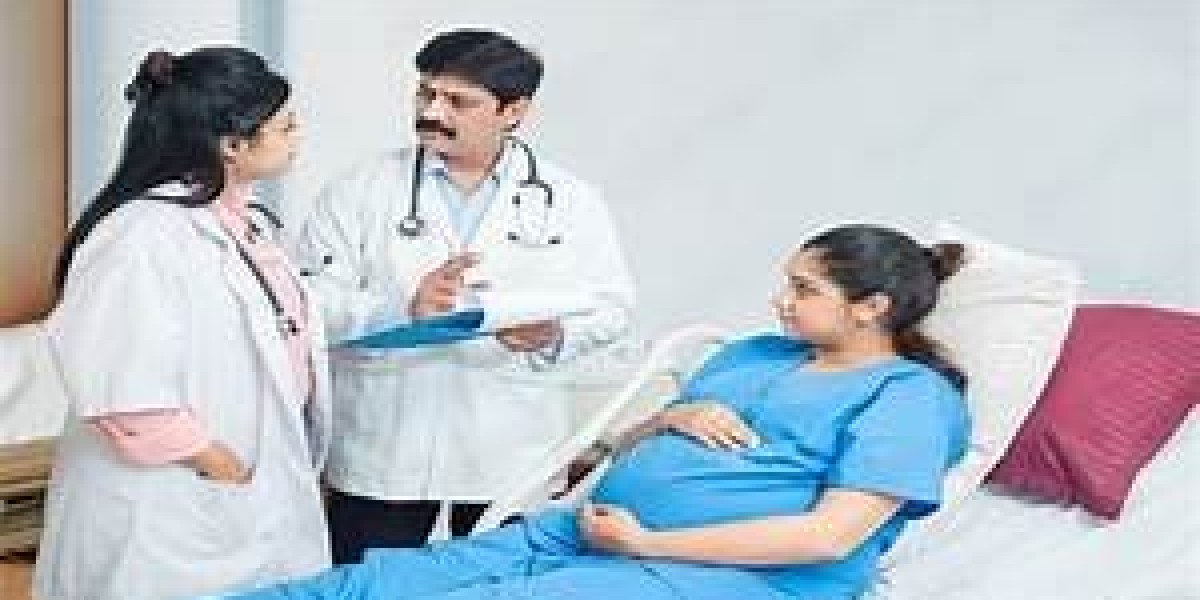Going through In-Vitro Fertilization (IVF) can be overwhelming, especially when you're unsure of what to expect. To provide clarity, Dr. Rashmi Prasad, a highly respected IVF Specialist Doctor In Patna, walks us through each stage of the IVF process—explaining the science, timeline, and emotional journey. Whether you’re just starting to explore fertility treatments or preparing for your first IVF cycle, this comprehensive guide will help you understand every critical step on your path to parenthood.
- Comprehensive Consultation & Diagnostic Work-Up
Every IVF journey begins with a thorough evaluation of both partners’ reproductive health:
- Medical and Surgical Review: Includes past illnesses, surgeries, menstrual history, and any previous pregnancies.
- Hormone Profiling & Imaging: AMH, FSH, thyroid function, and pelvic ultrasound help assess ovarian reserve and detect uterine or ovarian abnormalities.
- Semen Analysis: Evaluates sperm count, motility, morphology, and DNA fragmentation in the male partner.
Objective: Identify the root causes of infertility so Dr. Prasad can develop a personalized, cost-effective treatment plan.
- Personalized Ovarian Stimulation
Using the diagnostic findings, Dr. Rashmi Prasad designs a customized drug regimen:
- Daily Gonadotropin Injections (for 8–12 days) stimulate the ovaries to produce multiple follicles.
- Regular Monitoring: Ultrasound and estradiol blood tests track follicle growth and hormone response.
- Dose Adjustments: Dr. Prasad fine-tunes the medication dosage to optimize egg production while minimizing the risk of Ovarian Hyperstimulation Syndrome (OHSS).
Goal: Develop 8–15 mature follicles for successful embryo selection without compromising patient safety.
Also Read: Uterus Meaning In Hindi
- Trigger Shot & Final Maturation
When the lead follicles reach 18–20 mm in size:
- Trigger Injection (hCG or GnRH agonist): Administered 34–36 hours before egg retrieval.
- Pre-Procedure Instructions: Include fasting, hydration, and temporary medication pause.
Objective: Synchronize egg maturation for optimal timing and reduce the risk of premature ovulation.
- Egg Retrieval (Oocyte Aspiration)
This outpatient procedure is performed under mild anesthesia:
- Ultrasound-Guided Aspiration: Dr. Prasad uses a fine needle to collect eggs from each follicle.
- Quick Transfer to Lab: Eggs are immediately evaluated and placed in culture medium.
- Recovery: Patients typically experience mild cramping and resume daily activities the next day.
Goal: Safely retrieve viable eggs while keeping patient discomfort minimal.
- Sperm Collection & Preparation
On the same day as egg retrieval:
- Semen Sample: Collected fresh or thawed if frozen earlier.
- Processing: Density-gradient centrifugation isolates motile, healthy sperm.
- Optional Micromanipulation: If sperm quality is low, ICSI or IMSI may be used.
Goal: Prepare the healthiest sperm for fertilizing the mature eggs.
Also Read: Sleeping Position After Embryo Transfer
- Fertilization: Conventional IVF or ICSI
Based on semen quality and prior outcomes:
- Conventional IVF: Thousands of motile sperm are co-incubated with eggs for natural fertilization.
- ICSI: A single sperm is injected directly into each egg, ideal for male-factor infertility.
Objective: Achieve a high fertilization rate (70–90%) while minimizing abnormalities like polyspermy.
- Embryo Culture & Monitoring
Fertilized eggs (zygotes) are cultured for 3–6 days:
- Day 3 – Cleavage Stage: Embryos divide into 6–8 cells.
- Day 5/6 – Blastocyst Stage: A fluid-filled cavity and inner cell mass develop, signaling strong implantation potential.
- Time-Lapse Imaging & AI Scoring (Optional): Provides real-time data without disturbing embryo conditions.
Goal: Develop healthy embryos and gather accurate developmental insights for better selection.
- Elective Genetic Testing (Optional)
Recommended in cases of recurrent miscarriage, advanced maternal age, or genetic conditions:
- PGT-A: Screens for chromosomal abnormalities.
- PGT-M: Detects single-gene disorders like thalassemia or cystic fibrosis.
Objective: Reduce miscarriage risk and improve the likelihood of delivering a healthy baby.
- Embryo Selection & Transfer
Fresh vs. Frozen Embryo Transfer:
- Fresh Transfer: Occurs 3–5 days post-retrieval if hormone levels are optimal.
- Frozen Transfer (FET): Embryos are vitrified and transferred later when the uterine lining is best prepared.
The Transfer Procedure:
- Endometrial Assessment: Ultrasound confirms a receptive lining (≥7mm trilaminar pattern).
- Catheter Guidance: Dr. Prasad gently places the embryo(s) 2–3 cm from the uterine fundus.
- Minimal Discomfort: Procedure is similar to a pap smear and doesn’t require anesthesia.
Goal: Ensure precise embryo placement with minimal uterine disturbance.
- Luteal Support & The Two-Week Wait
Post-transfer, progesterone is given via injections, gel, or tablets:
- Lifestyle Advice: Regular light activity and stress management encouraged; heavy exercise avoided.
- Symptom Awareness: Mild cramps or spotting can be normal; severe discomfort should be reported.
Goal: Support uterine lining and reduce anxiety during the implantation window.
Also Read: Ovary Meaning In Hindi
- Pregnancy Test & Early Obstetric Care
- Beta hCG Test: Conducted 10–14 days after transfer to confirm biochemical pregnancy.
- Initial Ultrasound (Week 6–7): Checks for gestational sac, yolk sac, and heartbeat. If successful, care is transitioned to an obstetrician.
If the result is negative, Dr. Prasad reviews the entire cycle, revises the protocol, and plans for the next attempt.
Goal: Confirm early pregnancy—or optimize for future success.
FAQs with Dr. Rashmi Prasad
Question | Answer |
How many embryos are transferred? | Usually one (to avoid twins); two in rare cases. |
Does IVF guarantee pregnancy? | No, but IVF offers the highest ART success rate, depending on age and embryo quality. |
Is the procedure painful? | Mild sedation for egg retrieval; other steps involve little to no discomfort. |
When can I try again if it fails? | Typically after your next natural cycle or as advised by your doctor. |
Conclusion
The IVF process is a precisely managed series of medical, scientific, and emotional stages. With the expert guidance of Dr. Rashmi Prasad, a leading IVF Specialist Doctor in Patna, every step—from diagnostics to embryo transfer—is designed for success and patient care. By understanding this journey, couples can approach IVF with clarity, confidence, and hope.
Ready to take your first step toward parenthood?
Book your consultation with Dr. Rashmi Prasad today and turn possibility into the miracle of life.



